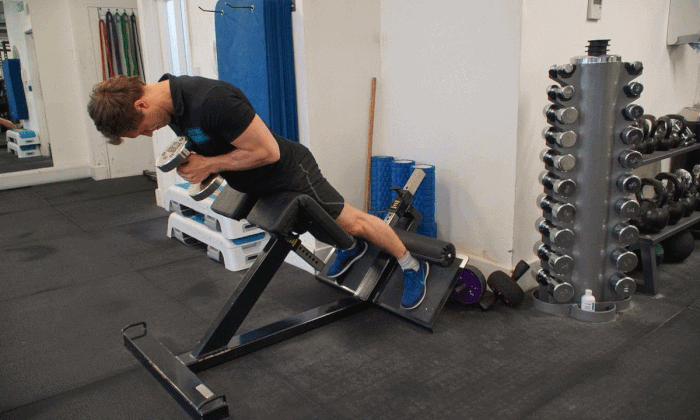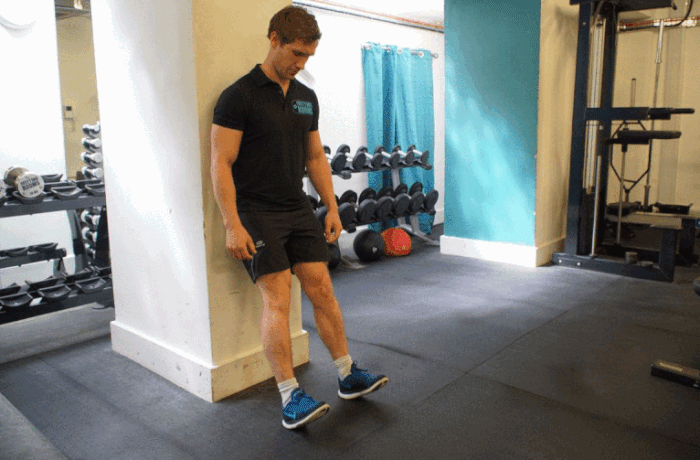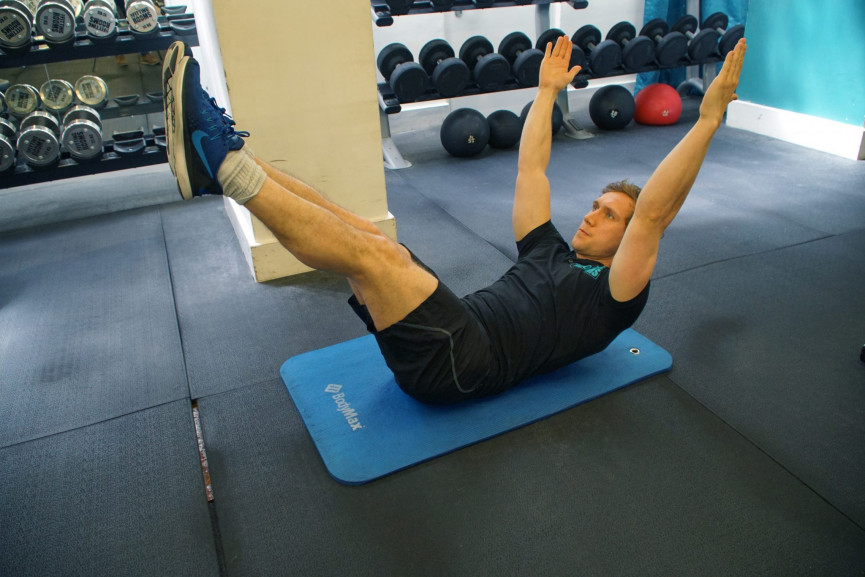5 easy exercises that'll help you prevent common injuries
Don’t tense up, seize up or get beaten up by your body, find top prevention tactics, right here!


Look, we’re all human. We all want to pick up the biggest weight and start chucking it around like we’re in the Thunderdome. Doesn’t look so impressive when you’re sat at home with a Papa John’s and a wrecked shoulder, though. The Fitting Rooms have given us a workout that makes sure your dreams aren’t crushed by piddling injury…
Get more great Fitness content and sign up for Mr Hyde’s weekly email
How to prevent ‘runners knee’
The exercise: Peterson Step Up

Muscles worked: Quads (specifically the vastus medialis oblique) calves, glutes.
How to do it: Stand with one leg on a low elevated platform, standing side on. Raise that foot up onto its front, lowering the other foot to the floor and back up. Once back at the top, lower your heel back onto the platform.
Rep range: 12 reps x 3.
Tip: If balance is a problem initially then use a stick as support.
Why do it: The VMO is crucial in maintaining integrity and strength at the knee joint when running. The balance factor involved in the Peterson Step Up also recruits the gluteus medius, which plays a vital role in knee health.
How to prevent recurring shoulder injuries
The exercise: External Rotator Cuff (Dumbbell)

Helps avoid: Persistent shoulder niggles.
Muscles worked: External rotators of the shoulder.
How to do it: Sit on a bench with one knee up, place the elbow of the hand holding the dumbbell on your knee, then lower the dumbbell to load the external rotators slowly, and at full range rotate back to the top.
Rep range: 8 reps x 3.
Tip: Try different angles and equipment, such as the cable machine.
Why do it: The Rotator cuff muscles are widely undertrained and when combined with excessive training of the pectorals, this leads to the rotator cuff injury, which can leave individuals out of action for up to a year. Keeping these muscles strong from the beginning should avoid any such injuries.
How to prevent lower back problems
The exercise: 45 Degree Back Extension

Helps avoid: Lower back issues.
Muscles worked: Glutes, hamstrings, back (erector spinae).
How to do it: Set up the back extension so that the pad is just below the hip line. With the core braced and the spine neutral, hinge over from the hips and feel the hamstrings load, then return back to the start position by driving hips into the pad and squeezing the glutes.
Rep range: 12 reps x 3.
Tip: Once comfortable with the movement, load with a dumbbell. Too many people are scared to add load to this movement but it’s the same as any other exercise. Any improvement requires a progressive increase in load.
Why do it: It’s an absolute must for any desk-bound workers who get bad backs. The stronger these muscles are, the less likely you are to pull them during exercise and the stronger your back will feel all day long.
How to prevent shin splints and avoid ankle injuries
The exercise: Tibialis Raise

Helps avoid: Shin splints and ankle instability.
Muscles worked: Tibialis anterior (the muscle running up the front of the shin) and other dorsiflexors of the foot.
How to do it: Either use a specific tibialis raise machine (most gyms don’t have one), or lean back against a wall with your feet out in-front and raise toes up towards the shin tensing the muscle, then slowly lower them back to the floor.
Rep range: 20 reps x 3.
Tip: Perform reps slowly, ensuring you engage the muscle.
Why do it: Shin splints are when the muscles have too much tension in them and the tendon pulls hard on its origin/insertion causing pain on the shin bone. Conditioning these muscles can stop them going into uncomfortable tension after running. Strengthening the dorsiflexors will also reduce your risk of turning your ankle when running.
How to strengthen your lower back and avoid recurring injuries
The exercise: Hollow Body

Helps avoid: Lower back injuries.
Muscles worked: Core.
How to do it: Lie on your back and bring your arms overhead. Raise your shoulders, hands and feet off the floor to create a shallow bowl with your entire body. Make sure your lower back stays firmly planted in the floor. Create tension from your toes all the way to your fingers.
Rep range: 45–60 seconds x 3.
Tips: Always ensure the lower back doesn’t lose contact with the floor.
Why do it: A strong core will help protect from lower back injuries – and the hollow body is one of the best for developing the core.
This content was first published in Mr Hyde’s free weekly newsletter. Sign up now for more excellence.
Latest


Ten things you need to know about Hyrox


Is clubbing actually good for you? We asked an expert







